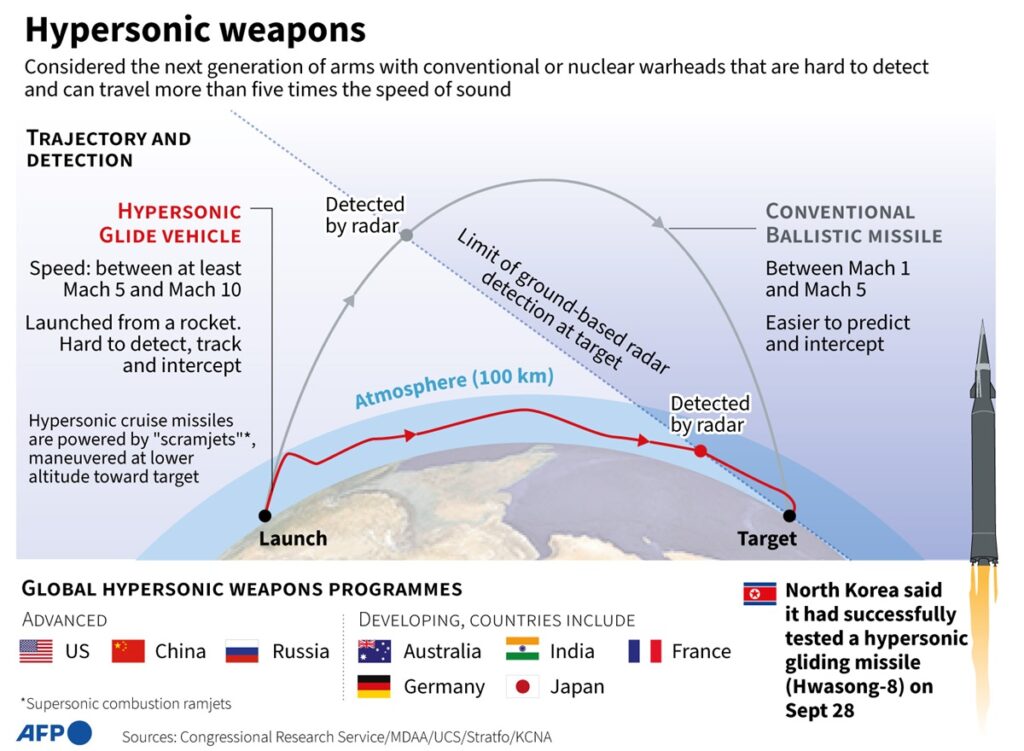The United States and Japan have signed a collaborative agreement to develop a new hypersonic missile defense system capable of neutralizing fast-moving threats during the glide phase of their flight, the Missile Defense Agency and Japan’s Defense Ministry announced on May 15.
The system, called the Glide Phase Interceptor (GPI), is estimated to cost over $3 billion, including Japan’s share of $1 billion.. The interceptor is planned for deployment by the mid-2030s.
The project was first unveiled in August 2023 at a meeting between Japan’s Prime Minister Fumio Kishida and U.S. President Joe Bidenduring Kishida’s April visit to Washington.
“In recent years, around Japan, missile-related technologies such as hypersonic weapons have improved dramatically,” the Defense Ministry said in a statement about the agreement to jointly develop the Glide Phase Interceptor. “Strengthening interception capabilities against them is an urgent issue.”
Japan’s 2024 budget allocation for interceptors
To initiate the development process, the Japanese government allocated ¥75 billion ($480 million) in its 2024 budget specifically for the development of interceptors. This funding is part of Japan’s record defense budget of ¥7.95 trillion, reflecting the growing tensions in the region, particularly with China and North Korea.
Under the arrangement, Japan is responsible for developing a part at the interceptor’s tip that separates in space to destroy the incoming warhead, as well as its rocket motors, officials said.
The interceptors will be designed to integrate into the U.S. Navy’s Aegis ballistic missile defense-equipped destroyers, enhancing their ability to detect, track, and engage hypersonic threats.
GPI Cooperative Development Project
Hypersonic weapons are designed to exceed Mach 5, or five times the speed of sound, posing a threat to regional missile-defense systems with their speed and maneuverability.

The GPI Cooperative Development Project Arrangement is part of the U.S.-Japan bilateral Memorandum of Understanding for Research, Development, Test, and Evaluation projects. As part of this agreement, Japan will take the lead in developing rocket motors and propulsion components for GPI.
The project, expected to be completed by the mid-2030s, involves two competing contractors, Raytheon Technologies and Northrop Grumman, who were awarded contracts in June 2022.
While the cooperative agreement sets a timeline for delivering GPI capabilities by the 2030s, Congress has expressed its desire for an initial operational capability by the end of 2029 and full operational capability by 2032. This underscores the importance of expediting the development process to address emerging threats effectively.
Developing effective defense against hypersonic weapons poses significant technical challenges due to their high speed and maneuverability. However, by pooling their expertise and resources, the U.S. and Japan aim to strengthen regional deterrence and bolster their defense capabilities.